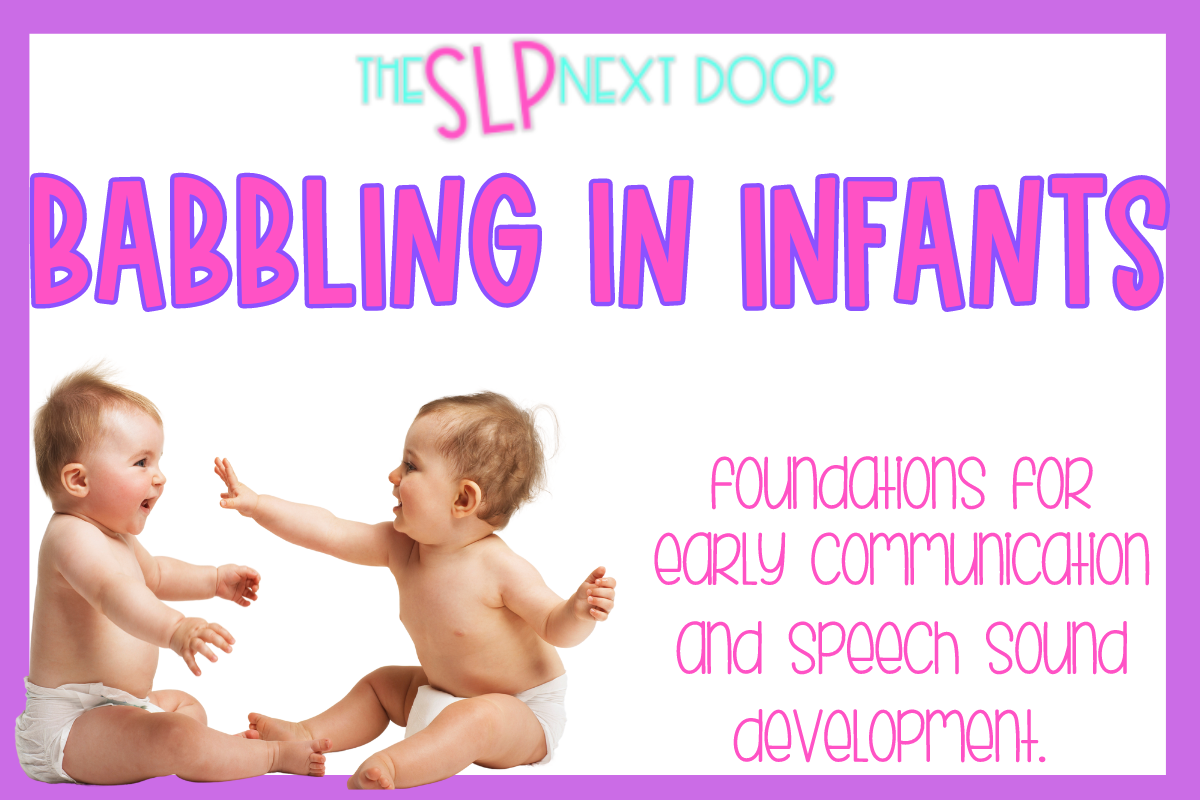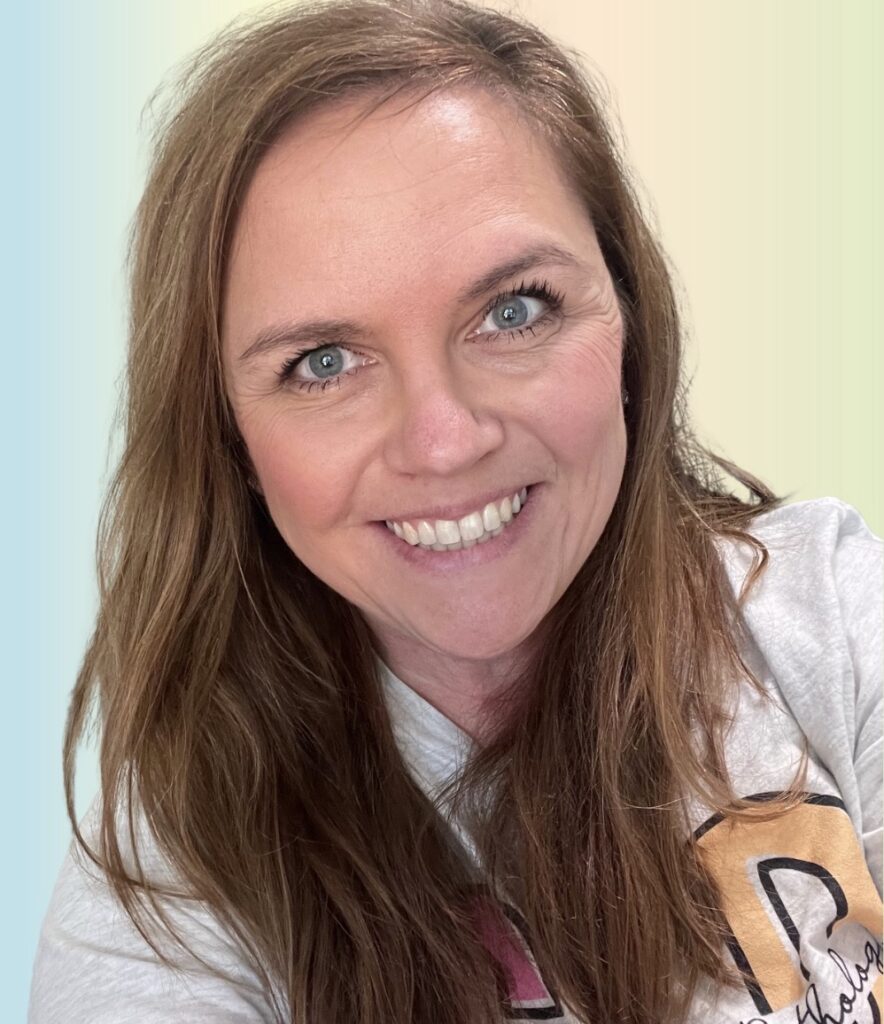Did you know that infant stages of development also include babbling in infants? There’s more than meets the eye when it comes to the sweet baby coos and baby sounds. They are very important for the development of future speech skills.
As you read through these- I want you to think about the prelinguistic skills that are also emerging in development.
Infant Babbling
Between 0-3 months, babies begin to alert to sounds, quiet or smile when someone speaks to them, make sounds back and forth with caregivers, and vary in sounds to show happiness or sadness. Babies begin to recognize loved ones and some common objects. They don’t have a label for these items, but they have applied a meaning to the object. For example: babies may begin to vocalize and move their bodies when they see a bottle because they know having the bottle will satisfy their feeling that is hunger. (even though they don’t necessarily know what “bottle” or “hunger” is)
Between 4 and 6 months, baby laughs and giggles begin to emerge. Babies respond to facial expressions, look at objects of interest, and follow objects with their eyes. They react to toys that make sounds, vocalize during play, and vocalize different vowel sounds. These vowel vocalizations are eventually combined with a consonant. Babbles at this stage do not have specific meaning attached, instead, they are more of an exploratory phase as infants begin to practice making sounds and experimenting with their rapidly developing vocal tract and oral skills.
Between 7 and 9 months, vocal development continues. Babies begin to string multiple syllables together to create “variegated babbling” and sometimes the babbles sound like complete words. During this time, babies will start to look at you when you call their name, stop for a moment when you say “no”, raise their arms to be picked up, recognize familiar objects or people, push away unwanted objects, and will begin to look for caregivers when they become upset. Babies are also beginning to use their oral structures differently with the introduction of baby foods.
Between 10-12 months, gestures are in full swing. Babies point, wave, and show or give objects to others. They also imitate simple actions and initiate gestures for social interactions and gameplay (blowing kisses or peek-a-boo). Babies try to copy your sounds and respond to simple words and phrases like “go bye-bye”. They may say 1-2 words *mama or dada* and use jargon (strings of syllables together with no “actual” words).
Why is Babbling Important for Language Development?
Babbling in infants is the prerequisite for later speech and language.
What could impact this area of development? Concerns with hearing, history of ear infections, fluid in the ears, cognitive or motor delays.
It’s important to consider all of this when evaluating and looking at a toddler’s current communication skills. It’s also why getting a medical history from the parent/caregiver in initial evaluations is important.
When it comes to treatment, talk, read, and play! Encourage babbling and vocalizations by engaging and interacting with little ones. Meet them where they are and build relationships. Imitate what they do, use big expressions, animal sounds, and exclamatory words like “yay” “uh-oh” “oh no!” crash, boom, vrrm!
Remember: communication should be fun and exciting!





7 Responses